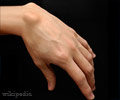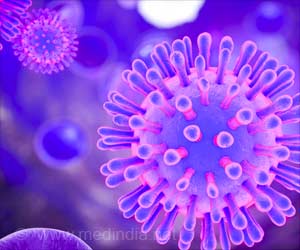Nonwoven fabric bioabsorbable spacer known as Neskeep separate tumors from adjacent normal organs during particle therapy, which may help treat malignant tumor easily.

‘Novel spacer developed known as Neskeep protects healthy organs from radiation exposure during particle therapy.
’





Neskeep received pharmaceutical approval in December 2018 and is available to purchase from June 27, 2019.Radiation therapy, which is one of the less invasive and less stressful treatments, has been recognized as an important cancer treatment. Health insurance from the Japanese government covers particle therapies for bone and soft tissue tumors, pediatric malignant tumors, and non-squamous head and neck tumors.
In some cases, it can be difficult to apply particle therapy when malignant tumors are located near digestive tract organs sensitive to radiation (the small and large intestine). Doctors currently use non-absorbent materials such as silicone balloons and Gore-Tex sheets to act as spacers in the abdomen and intestines, or they place the intestine or other organs outside the radiation field using an absorbent mesh. Based on several observations, some patients may then undergo a second surgery to remove the spacer, or it may cause serious complications in their bodies for the rest of their lives.
The team succeeded in developing a nonwoven fabric bioabsorbable spacer that can create a space between healthy and cancerous tissues during particle therapy. After that, the spacer is safely absorbed by the body.
The Neskeep is available in 5, 10 and 15mm nonwoven fabrics using polyglycolic acid, the same material as polyglycolic acid suture thread (Opepolix N (approval code: 16200BZZ01566000) and Opepolix (approval code: 16200BZZ01566000), both already approved for medical use.
Advertisement
In all treatments, the spacer preserved enough distance between the tumor and healthy tissue during the particle therapy. Having successfully reduced radiation exposure to the intestines, they were able to use a full dose of radiation therapy. There were no serious complications observed with this treatment, and they confirmed that the spacers safely disintegrated afterward.
Advertisement
Currently, two kinds of treatment are used in clinical settings: proton therapy (using protons) and heavy-ion radiotherapy (using carbon ions). Doses of concentrated radiation in particle therapy: Particle beams display a physical trait called the Bragg Peak, which can be used to focus the dose of radiation to target the tumor. This also enables us to reduce the impact on healthy tissue.
Biological effects of particle therapy: Compared to X-rays, proton beams and carbon ion beams are very effective. If we take the relative biological effect on organisms as 1, the effects of proton and heavy-ion beams are 1.1 and 3, and there are high expectations for effective treatment against radiation-resistant tumors.
Source-Eurekalert










